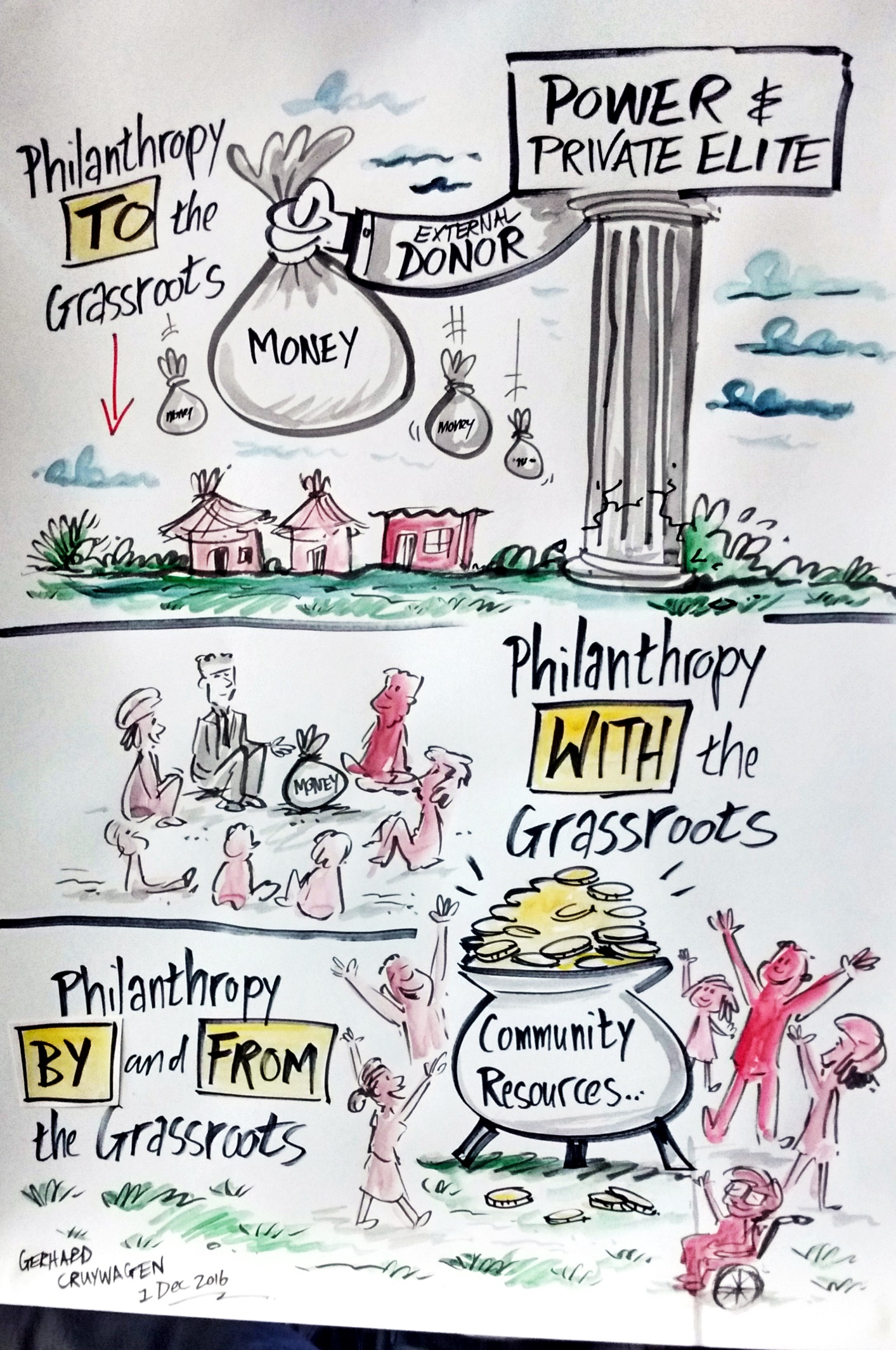In one of the many buzzing fringe sessions at the Global Summit on Community Philanthropy, contributors from across the globe discussed how they engage and empower communities in deciding what funds are spent on and how.
If community philanthropy organisations (foundations, women’s funds etc.) consult with communities on the challenges they need to address, projects are likely to be more focused, relevant and valuable: a logical idea – I’m sure we all agree!
 Placing grant and project decisions in the hands of communities is one clear step towards shifting some of the power that comes with money and grant making, towards communities themselves.
Placing grant and project decisions in the hands of communities is one clear step towards shifting some of the power that comes with money and grant making, towards communities themselves.
While many community philanthropists are unanimous in their acclaim of community participation in grant-making, the terms, definitions, structures and models used in delivery vary immensely.
Despite the differences in detail, some overarching lessons were gleaned from the insightful discussions:
- Think beyond cash. “Everybody is a giver in community philanthropy, there are no donors and beneficiaries” (participant). In some contexts, years of international aid has created a dependency culture where communities have come to believe that only external assistance and resources can address the challenges they face. Community philanthropy rejects this idea, encouraging communities to identify and build on their existing assets; while they may not have money, they do have people, land, existing networks, cultural traditions etc.
It was suggested that through understanding, using and owning assets, communities can build the confidence to grow their own assets, until ultimately they no longer need external support. - Use technology. Online peer review and the use of social media were a few ideas shared on how community philanthropists are starting to innovate with technology to include communities in grant-making procedures.
- It’s not just the community. Understanding each community’s own dynamic ‘ecosystem’ and how different but interconnected influences and actors overlap and interact is key. This considers that a community is not a discrete unit and populations, relationships, culture, ways of living etc. are affected by external influences.
- Take your time. Building trust and putting shared systems in place takes time. Funds and communities need time together to identify, discuss and implement community-based work ideas.
- Work with the politics. When talking about money with communities, discussions can easily get politicised and the relaxed and trusting dynamics and relationships which took so long to build can change. Contributors suggested that this is a challenge that will always be present, but that the impact of political dynamics on discussions and relationships can be eased or relaxed.
- Don’t forget your ethics and morals! Shared decision-making and a shared understanding of goals is a central part of community philanthropy. That said, hidden obstacles or unwritten rules, such as decisions based on existing friendships, sympathies, personal interests etc. can also influence decisions and, in some cases, decisions are made in closed circles with no input from the community. Where possible, it is important to openly discuss and try to resolve how to overcome these challenges and remain community driven.
- Accept piecemeal progress. A truly participatory system can never be fully achieved: it is a goal that should guide the field of work. Progress towards the goal can be monitored and achieved over time; it is important to regularly question “is it better than before, is it less political, is it more inclusive etc.
While this isn’t a complete list of lessons (contexts, grant-making organisations and communities vary hugely, and fringe discussions were limited by time), it provides important insight into current community philanthropy approaches. Genuine participatory grant-making is hard in practice: practical challenges, diverse communities and changing circumstances (amongst other things) will always affect it in some way.
Yet to the conference delegates, this wasn’t a setback, they knew their role: uphold the aspirational goal whilst delivering flexible pragmatic approaches. There was common recognition that in the absence of simple solutions, the best alternative is a focussed, realistic, ground-based, accommodating and, sometimes quite messy, approach. Perhaps, over time, the balance in power in grant-making can genuinely shift towards communities.
Anna Wansbrough-Jones is a consultant and director of Stratagem International.
Photo credit: Gerhard Cruywagen of Greenhouse Cartoons.



Comments (0)